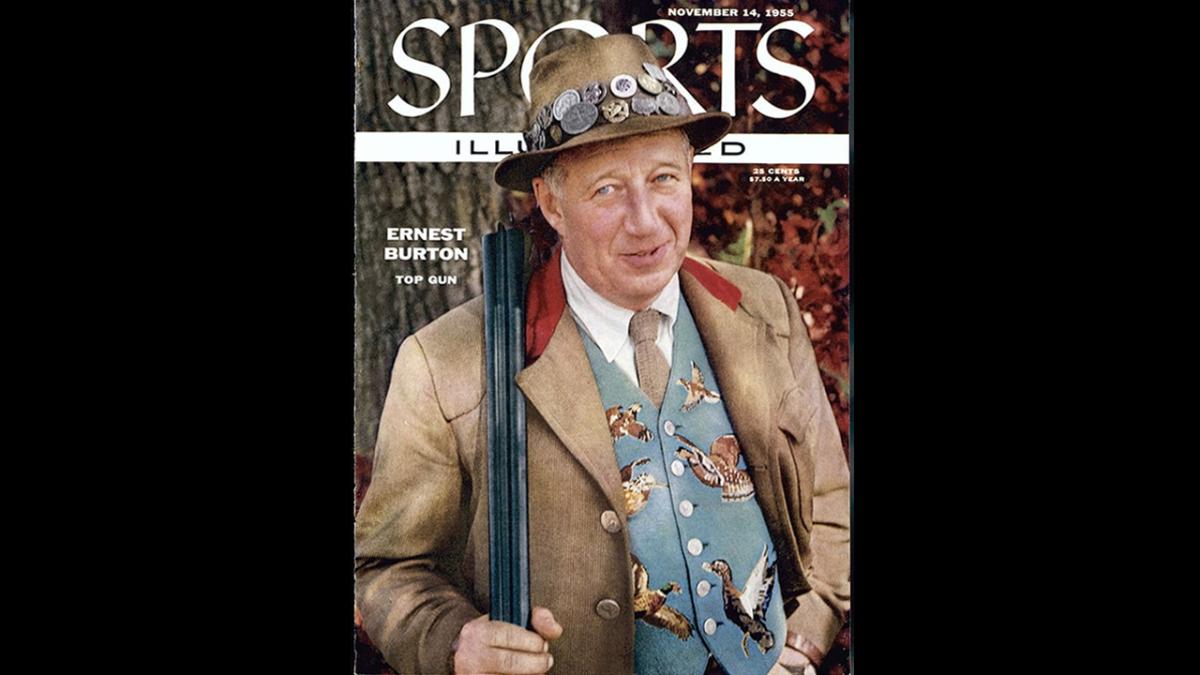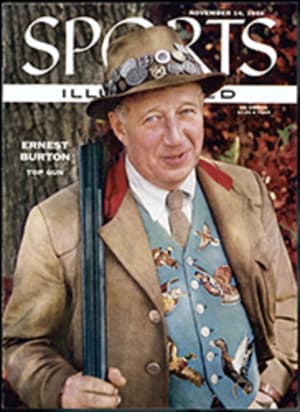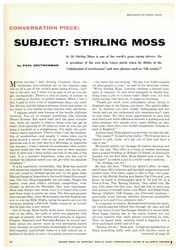
Field Trials for Spaniels and People
In the next two months some of the finest gun dogs in the country will get together in the field with their handlers and owners and in two climactic title events will bring to a close the 1955 spaniel field trial season. At Amwell Shooting Preserve near Lambertville, N.J. the weekend of November 19-20, the American Spaniel Club will hold its National Cocker Spaniel Championships; and on December 1-4 at the Crab Orchard Wildlife Refuge, near Herrin, Ill., a phenomenal dog called Ludlovian Bruce of Greenfair, owned by Mr. and Mrs. Joseph C. Quirk of Greenwich, Conn, and handled by Larry MacQueen, will defend his title in the National Springer Spaniel Championships.
Sparkling performances in the spring events had promised a good season with stout competition in the fall trials, and this prediction has been fully realized. One of the best trials in recent months was the springer spaniel open all-age stake of the Cocker Spaniel Club of Long Island (September 24-25), where field competitions for both cocker spaniels and English springer spaniels were held.
A CLOSELY CONTESTED FINISH
In a closely contested finish in the springer trial, Ludlovian Bruce of Greenfair came through with a performance which carried the day. As a large gallery of field trial enthusiasts watched the final heat in silence, this eager white-and-liver-colored English springer increased the tempo of his slashing pace and wheeled into the rough cover to his right. Ahead of him a big cock pheasant flared from the thick bramble cover with a loud squawk and an explosive roar of wings and streaked for the safety of the woods line ahead.
The dog stopped instantly, dropping to his haunches, and sat marking the game bird's flight, every muscle aquiver with intense eagerness. "Ride it out," signaled the judge, and the gunner held his fire in recognition of the request for a "long fall." At the crack of the gun, the pen-raised bird crumpled and slanted down into the high cover which bordered the woods, foretelling the difficult retrieving task for which the judge had hoped.
Out in the cover some 20 yards in front of his handler the spaniel still sat steady, restrained only by the memory of his training and indicating his impatience by an occasional backward look. The judge was testing the dog's gun manners under pressure. After an interval he signaled the handler to "send him," and at the voiced command to "fetch," the dog was off and back at a gallop in a few minutes with the downed bird delivered tenderly to hand.
It was an example of spaniel field work at its best: a hard-paced ground-covering heat, with the course properly quartered, a proof of fine scenting ability, willing handling response, perfect steadiness to wing and shot and a difficult retrieve properly executed. International Field Trial Champion Ludlovian Bruce of Greenfair had added another first place silver bowl to his owners' well-filled trophy case.
It was not an easy win for Bruce over the rough courses on the magnificent estate of Marshall Field at Lloyd's Neck. He was pressed hard throughout, and the judges, Mr. Robert Moulton of Norristown, Pa. and the writer were forced to hold a third series, in addition to a water test, to settle the issue.
A number of new imports from England have recently appeared on the scene, and springer spaniel competition is growing stronger each year. In fact, the three dogs that were placed below Bruce are all imported contenders. Ludlovian Scamp of Greenfair, kennelmate of the winner, placed second; Saighton's Samson, owned by Robert McLean of Philadelphia and handled by the well-known trainer Arthur R. Eakin of Carversville, Pa., was third; and fourth place went to Rivington Countryman, owned by Dr. and Mrs. Samuel Milbank of New York and Fisher's Island, N.Y. and piloted by the doctor, who has long been recognized as one of the top amateur handlers in the country.
ENGLISH IMPORTS DOMINATE
The field trial spotlight was turned on cocker spaniels when the open all-age and novice stakes for this breed were held. These are events where English and American cockers compete on even terms. In the open all-age, English imports were again dominant, winning the two top places and also annexing fourth-place honors. The winner was the flashy little white-and-red Field Trial Champion Greatford Meadow-court Pin, owned by Albert F. Winslow of Goshen, N.Y. and handled by Jasper Briggs. Second place went to a recent import, Greatford Charlie, owned by the Pemberton Kennels of Mr. and Mrs. Dean Bedford, Fallston, Md. Third honors were garnered by the consistently brilliant, domestic-bred Field Trial Champion Berol Lodge Glen Garry, owned by Mr. and Mrs. Henry Berol of Chappaqua, N.Y. and handled by Blair Crowell. English Field Trial Champion Shafylde Jean of Cinar, an entry of the Cinar Kennels of E. Roland Harriman of Arden, N.Y., gathered the fourth-place rosette under the whistle of Trainer Lionel J. Bond.
In the matter of spectator enjoyment, spaniel field trials rank high in the whole pageantry of gun dog competitions. They are colorful, exciting and packed full of action with a minimum of nonactive delays. The spectator who follows along with the gallery is accorded the opportunity to witness what he can seldom see in many other canine competitions—the entire cycle of events for which these breeds have been developed and trained; the search for, finding, handling and retrieving of game birds from both land and water.
Since the first championship spaniel trials in this country in 1924, the sport has known a healthy growth. In the early days of field trials ownership of the top dogs was concentrated in a handful of enthusiastic devotees who were willing to import the best England had to offer. But nowadays, while importations are made with regularity, there is a growing tendency to breed and develop our own stock. The sport has spread from the East to the West Coast and the Middle West until there are now about 30 clubs holding annual trials.
Spaniel trials differ in several ways from bird dog trials. In only a few bird dog trials is game actually shot, while shooting is necessary in spaniel trials to test retrieving ability as well as the finding of dead or wounded game. In bird dog trials the dogs are run as braces, two dogs working the same course at the same time. In spaniel trials the dogs are put down in braces but the bracemates work parallel courses, each about 50 yards wide, and must not interfere with each other.
The trainer's art is clearly reflected in spaniel field trial performances, for the dog must be taught to do things that are against his natural instincts and inclinations, such as stopping instantly at flush, remaining steady until ordered to retrieve or resume hunting, and restricting his range to proper gunning distances.
The social side of a spaniel trial is as much fun as the trial itself. Devotees of this sport are friendly outdoor people, ready to welcome novices and explain the fine points of the performances. Those who have officiated, gunned or judged at trials take pride in wearing the badges of the clubs concerned which commemorate their participation (see right).
Spaniel field trials have contributed much to the conservation of wildlife resources through encouraging the use of retrieving dogs in hunting. Whether he be a rough-and-ready, unschooled and devil-may-care performer or a perfectly mannered field trial dog, the spaniel can prove his worth on any day of the open season through the salvage of game that would otherwise have been wasted, to say nothing of the added pleasure of hunting behind him and the loyalty of his devoted companionship. He is, in fact, fast becoming recognized as America's top all-around gun dog.
FIELD TRIAL BADGES
NATL. ENGLISH SPRINGER FIELD TRIAL ASSN.
SPORTSMAN'S SPANIEL CLUB OF ILLINOIS
BATH COUNTY (VA.) FIELD TRIAL ASSN.
NEBRASKA DOG AND HUNT CLUB
VALLEY FORGE (PA.) FIELD TRIAL ASSN.
COCKER SPANIEL FIELD TRIAL CLUB OF AMERICA
FIELD TRIAL GUNNER'S GUILD
AMERICAN SPANIEL CLUB NATL. COCKER FIELD TRIAL
WESTMINSTER KENNEL CLUB
MONMOUTH COUNTY SPANIEL FIELD TRIAL ASSN.

